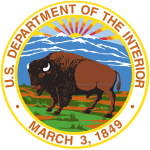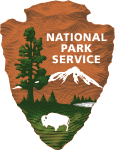Equestrian statue of Simón Bolívar (Washington, D.C.)
1959 sculpturesArtworks in the collection of the National Park ServiceBronze sculptures in Washington, D.C.Equestrian statues in Washington, D.C.Monuments and memorials in Washington, D.C. ... and 4 more
Northwest (Washington, D.C.)Outdoor sculptures in Washington, D.C.Sculptures of men in Washington, D.C.Statues of Simón Bolívar in the United States

An equestrian statue of Venezuelan military and political leader Simón Bolívar by the American artist Felix de Weldon is located in Washington, D.C., at Virginia Avenue NW, 18th Street NW, and C Street NW, near the United States Department of Interior and the Pan American Union Building of the Organization of American States. It was surveyed as part of the Smithsonian Institution's Save Outdoor Sculpture! survey in 1993.
Excerpt from the Wikipedia article Equestrian statue of Simón Bolívar (Washington, D.C.) (License: CC BY-SA 3.0, Authors, Images).Equestrian statue of Simón Bolívar (Washington, D.C.)
18th Street Northwest, Washington
Geographical coordinates (GPS) Address External links Nearby Places Show on map
Geographical coordinates (GPS)
| Latitude | Longitude |
|---|---|
| N 38.893111111111 ° | E -77.042 ° |
Address
The Liberator Simon Bolivar Memorial
18th Street Northwest
20240 Washington
District of Columbia, United States
Open on Google Maps









